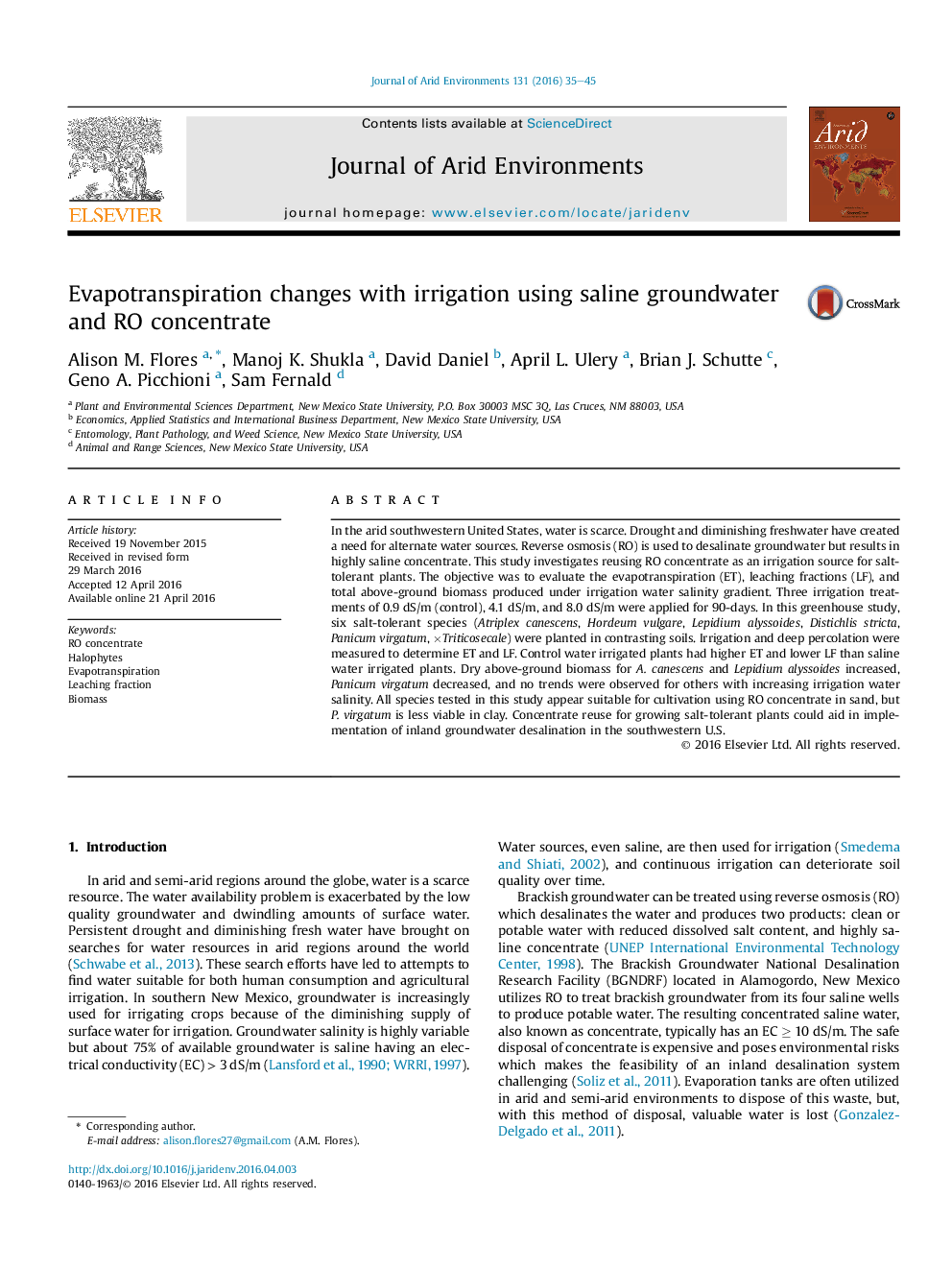| Article ID | Journal | Published Year | Pages | File Type |
|---|---|---|---|---|
| 4392722 | Journal of Arid Environments | 2016 | 11 Pages |
•Reuse of RO concentrate as irrigation source for salt-tolerant plants is proposed.•Evapotranspiration decreased with increased irrigation salinity for some species.•Dry biomass for Atriplex canescens and Lepidium alyssoides increased, Panicum virgatum decreased.•All six species tested are suitable for cultivation using RO concentrate.•RO concentrate reuse can lead to inland groundwater desalination in arid areas.
In the arid southwestern United States, water is scarce. Drought and diminishing freshwater have created a need for alternate water sources. Reverse osmosis (RO) is used to desalinate groundwater but results in highly saline concentrate. This study investigates reusing RO concentrate as an irrigation source for salt-tolerant plants. The objective was to evaluate the evapotranspiration (ET), leaching fractions (LF), and total above-ground biomass produced under irrigation water salinity gradient. Three irrigation treatments of 0.9 dS/m (control), 4.1 dS/m, and 8.0 dS/m were applied for 90-days. In this greenhouse study, six salt-tolerant species (Atriplex canescens, Hordeum vulgare, Lepidium alyssoides, Distichlis stricta, Panicum virgatum, ×Triticosecale) were planted in contrasting soils. Irrigation and deep percolation were measured to determine ET and LF. Control water irrigated plants had higher ET and lower LF than saline water irrigated plants. Dry above-ground biomass for A. canescens and Lepidium alyssoides increased, Panicum virgatum decreased, and no trends were observed for others with increasing irrigation water salinity. All species tested in this study appear suitable for cultivation using RO concentrate in sand, but P. virgatum is less viable in clay. Concentrate reuse for growing salt-tolerant plants could aid in implementation of inland groundwater desalination in the southwestern U.S.
